LOOK BEYOND POINSETTIA GLITZ
A Harem of Males
Phew, what a year 2020 was! Well, it’s over and, at least at this writing, things look hopeful for the future, at least from my perspective. Except if you live in a tropical or subtropical climate, there’s not much distraction from anything gardenwise, for now, so let’s take a close look at a plant no doubt sitting on many coffee tables and windowsills. Poinsettia. I’m not a big fan of their appearance, but I do like them as botanical curiosities.
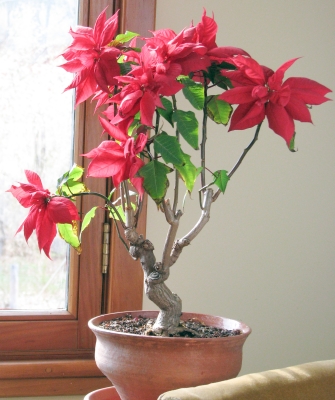
Let’s share some botanical lore of this plant by setting your holiday poinsettia on a table in good light for a close look at its flowers. I say “close ” because the flowers are not those large, red, leaf-like structures. The large, red, leaf-like structures are just that — leaves, albeit modified leaves called bracts. The bracts attract pollinating insects to the plant.
The actual flowers of the poinsettia, which are not very showy at all, originate within the small, greenish, cup-shaped structures you see above the bracts. These cup-shaped structures are “cyathiums.”
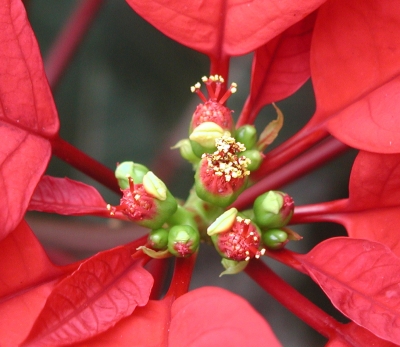
Each cyathium contains a single female flower surrounded by a harem of males. Pluck a cyathium from the plant, take a sharp knife or razor, and slice it in half from top to bottom. A magnifying glass helps now. You’ll see that the inner wall of the cyathium is lined with numerous tiny flowers which, when the flower is mature, protrude up through the opening of the cup. These are all male flowers.
Look very carefully and you’ll also see a stalk attached to the very bottom of the cyathium, protruding up through the cup opening, and capped by what looks like a turban. That is the single, female flower, which, to promote cross- rather than self-pollination, emerges from the cyathium after male flowers begin to shrivel. Cross-pollination promotes genetic diversity for healthier plants.
In addition to the male and female flowers, on the outside of the cyanthium is a single yellow gland that looks like the mouth of a fish poised to ingest food.
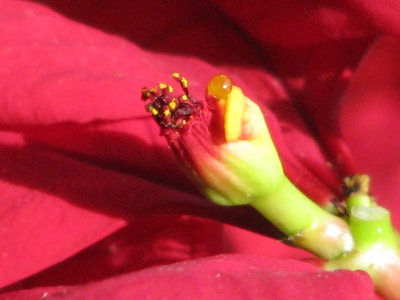
Next time a friend comments on the beauty of your poinsettia flower, take out a magnifying glass and closely examine a few cyathiums before looking up and agreeing nonchalantly.
Fool the Plant
Have you ever wondered how stores always manage to have blooming poinsettias for the holiday season?
Poinsettia, along with chrysanthemums and most strawberry varieties, is a “short-day” plant. Short-days induce “short-day” plants to form flower buds. (In reality, plants are responding to long nights, but the phenomenon was originally thought to be daylength dependent, and the term “short-day” plants has stuck with us.) Poinsettia can be fooled into blooming at any time of the year merely by exposing it to artificially shortened days.
To secure blooming plants for this past holiday season, poinsettias grown in large commercial greenhouse ranges were covered with a shade cloth so that they experienced 14 hours of darkness each “night” beginning around September. After 8 weeks of this treatment, they formed flower buds which became fully developed just before the holiday season.
You Do It
You can do this at home to make this year’s poinsettias bloom again whenever you want. Your poinsettias first will need a rest period. Loss of leaves and fading flowers indicate that your plants are entering dormancy. (Even tropical plants, such as poinsettia, do take a short, mild annual rest.) When the plants become dormant, move them to where it is cool. Water them infrequently, just enough to keep their stems from shriveling.
About April, the plants will be ready to start growing again. Cut the stems back to a few strong shoots, each about 6 inches long. Give the plants sun, warmth, and water. New shoots will push forth from dormant buds. When warm weather has settled, you can put the plants outside.
As temperatures cool in late summer, bring the plants indoors to a sunny window. Keep them away from cold drafts, which would cause their leaves to drop.
Now for the photoperiod treatment. Beginning three months before you would like the plants to bloom, make sure the plants get 14 hours of darkness each night. Moving them into a dark closet or covering them with a paper bag are convenient ways to do this.
The dark period each night must be uninterrupted. Even peek at them with a flashlight at midnight will have them acting as if they had a short night, instead of the needed long night.
After 8 weeks of the above treatment, move the plants back to their sunny window. Flower buds should be evident, and you should have blooming poinsettias within a month. If you want bloom for the holiday season next year, start the photoperiod treatment about the middle of September.
Poisonous?
Poinsettia, Euphorbia pulcherrima, is a member of the Euphorbiaceae family, commonly called the Spurge family. A common characteristic of plants in this family — which includes Hevea braziliensis, tapped commercially to make rubber — is the milky sap they exude when cut. The sap has often been considered poisonous and was sometimes used medicinally as a purge (hence “spurge,” from the French word espugier, meaning to purge). But, as Philippus Aureolus Theophrastus Bombastus von Hohenheim, more commonly known as Paracelsus, wrote in the 15th century, “All things are poisons, for there is nothing without poisonous qualities. It is only the dose which makes a thing poison.”
In fact, the sap is only mildly poisonous to humans and other animals. It can cause a rash on the skin or mouth, and stomach upset. So go ahead and nick the stem of your poinsettia and see the milky sap exude. No need to touch it.

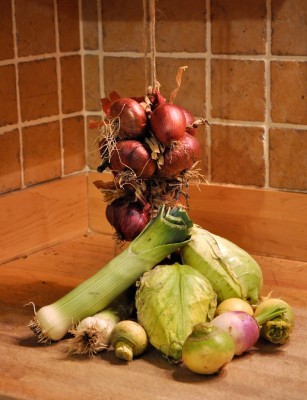 (The cooler is an insulated room cooled with an air conditioner that has been tricked, with a device called
(The cooler is an insulated room cooled with an air conditioner that has been tricked, with a device called 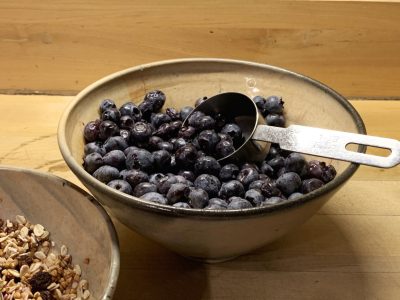
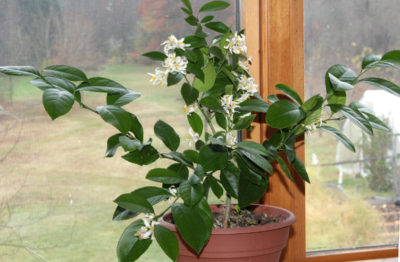
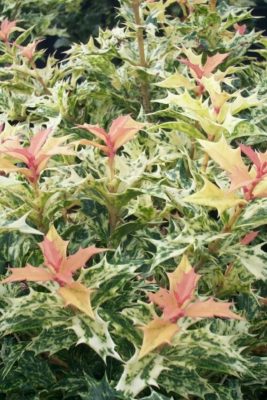 It’s cold-hardy to Zone 6. My plan is to grow it in a pot to bring indoors to a cool sunny window in late fall to spend the winter.
It’s cold-hardy to Zone 6. My plan is to grow it in a pot to bring indoors to a cool sunny window in late fall to spend the winter.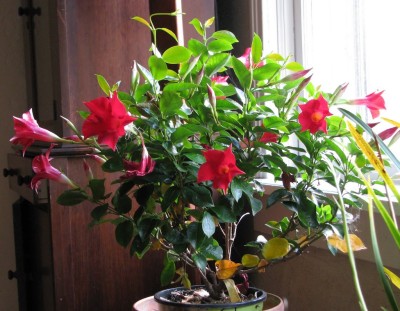 vining habit was also a big part of the draw, making the plant a stand-in for morning glory, but with prettier leaves and brighter flowers. Mandevilla is a perennial, tropical vine, so must winter indoors rather than be seeded outdoors each spring like morning glory. My vine’s leaves yellowed so much in winter that I tired of looking at it; one winter day I walked it over to the compost pile.
vining habit was also a big part of the draw, making the plant a stand-in for morning glory, but with prettier leaves and brighter flowers. Mandevilla is a perennial, tropical vine, so must winter indoors rather than be seeded outdoors each spring like morning glory. My vine’s leaves yellowed so much in winter that I tired of looking at it; one winter day I walked it over to the compost pile.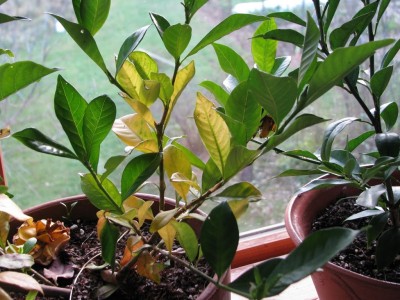
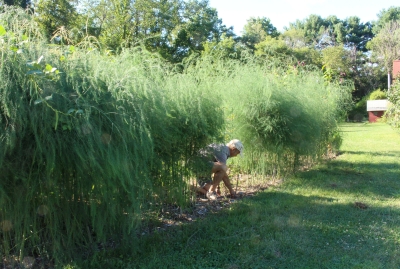 weeds germinating and growing, and hard to reach among the 6-foot-high forest of feathery stalks. The bed is now weeded and soon to be fertilized (2#/100 square feet of soybean meal) and mulched (wood chips 2 inches deep).
weeds germinating and growing, and hard to reach among the 6-foot-high forest of feathery stalks. The bed is now weeded and soon to be fertilized (2#/100 square feet of soybean meal) and mulched (wood chips 2 inches deep).

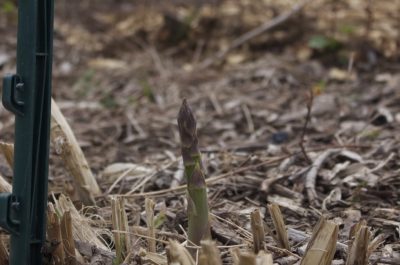
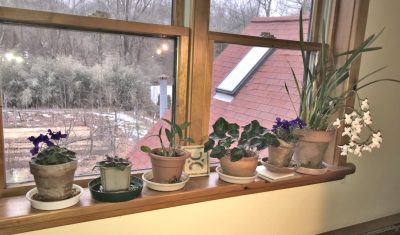
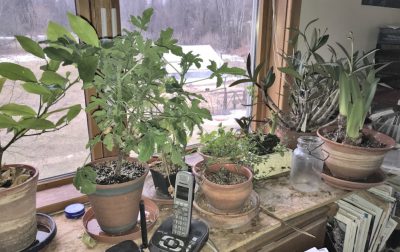
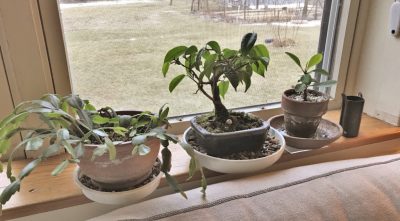
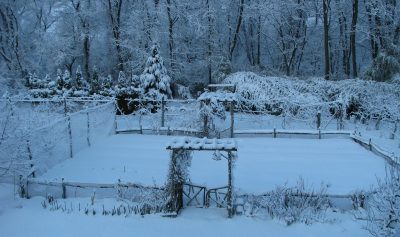
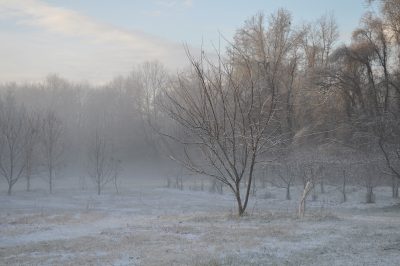
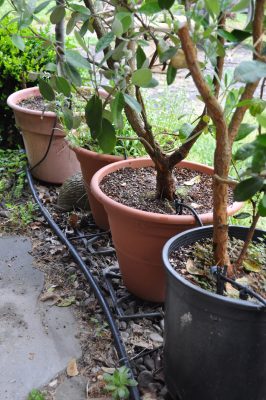 The fittings for wending water through tubes around corners and up into pots are low pressure fittings; the pressure lowers water pressure to a mere 20 psi.
The fittings for wending water through tubes around corners and up into pots are low pressure fittings; the pressure lowers water pressure to a mere 20 psi.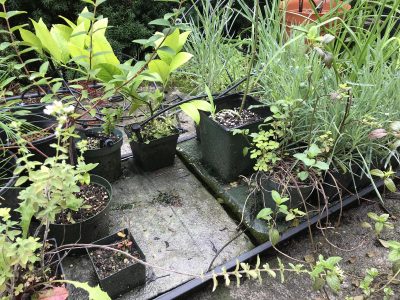 Part of the capillary mat dips into the reservoir of water, which gets sucked up into the mat and then sucked up into the potting soil through the drainage holes in each flat-bottomed plant pot.
Part of the capillary mat dips into the reservoir of water, which gets sucked up into the mat and then sucked up into the potting soil through the drainage holes in each flat-bottomed plant pot.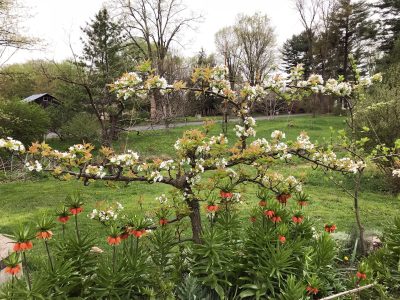
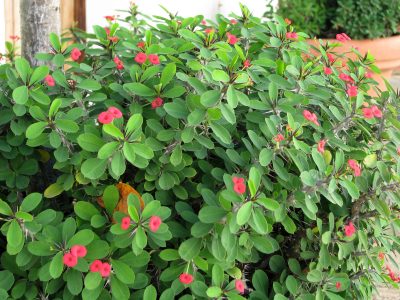
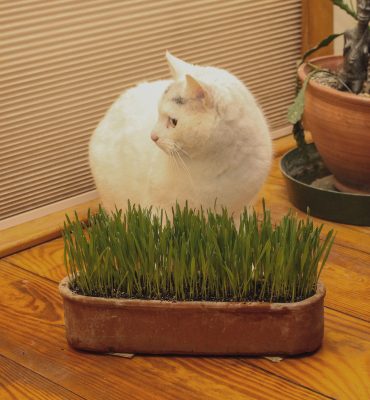
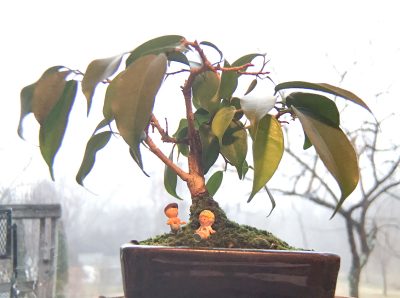 Moss carpeting the soil beneath it and creeping up the trunk complete the picture. I’ve made and am making baby ficus into a bonsai.
Moss carpeting the soil beneath it and creeping up the trunk complete the picture. I’ve made and am making baby ficus into a bonsai.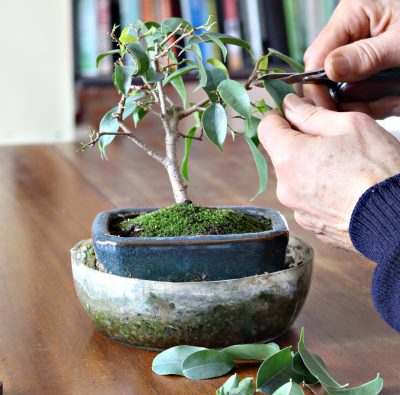 Clipping the leaves accomplishes two goals. First, plants lose water through their leaves so removing leaves reduces water loss (important in consideration of the next celebratory step).
Clipping the leaves accomplishes two goals. First, plants lose water through their leaves so removing leaves reduces water loss (important in consideration of the next celebratory step).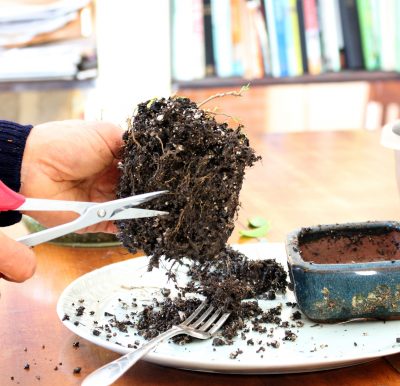 Baby ficus gets all water and its nourishment from this amount of soil. Within 6 months or so, roots thoroughly fill the pot of soil and have extracted much of the nourishment contained within.
Baby ficus gets all water and its nourishment from this amount of soil. Within 6 months or so, roots thoroughly fill the pot of soil and have extracted much of the nourishment contained within. As far as science, I shorten stems where I want branching, usually just below the cut. Where I don’t want branching but want to decongest stems, I remove a stem or stems right to their base. I also remove any broken, dead, or crossing branches unless, of course, leaving them would be picturesque.
As far as science, I shorten stems where I want branching, usually just below the cut. Where I don’t want branching but want to decongest stems, I remove a stem or stems right to their base. I also remove any broken, dead, or crossing branches unless, of course, leaving them would be picturesque.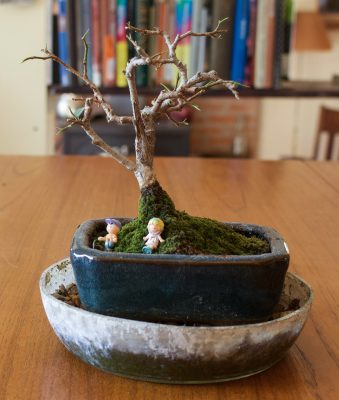
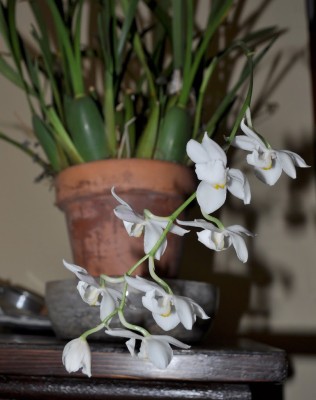 The plant spends summers outdoors in semi-shade near the north wall of my house, and winters indoors on a sunny windowsill. I water it perhaps twice a week, unless I forget.
The plant spends summers outdoors in semi-shade near the north wall of my house, and winters indoors on a sunny windowsill. I water it perhaps twice a week, unless I forget. This orchid is Dendrobium kingianum, which does go under the more user-friendly common name of pink rock orchid. I have also gotten this one to flower — but not every year.
This orchid is Dendrobium kingianum, which does go under the more user-friendly common name of pink rock orchid. I have also gotten this one to flower — but not every year.